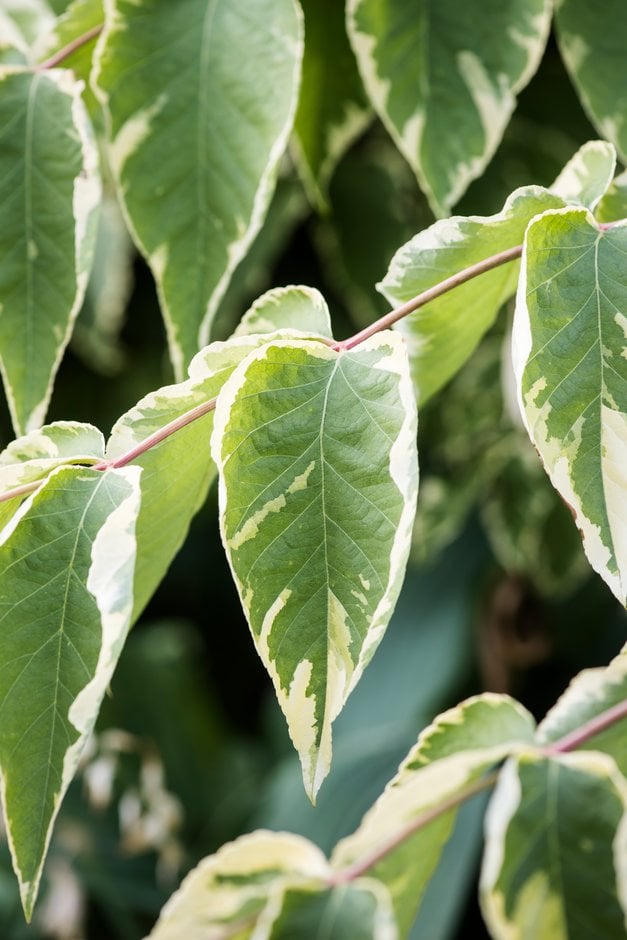Aralia elata 'Aureovariegata' (v)
angelica tree 'Aureovariegata'
A large, suckeringdeciduous shrub or small tree up to around 8m tall . Its large, variegated leaves comprising paired leaflets have irregular yellow margins and paler undersides. Small white flowers are borne in large panicles from late summer into early autumn and are followed by black fruits
Size
Ultimate height
8–12 metresTime to ultimate height
20–50 yearsUltimate spread
Wider than 8 metresGrowing conditions
Moisture
Moist but well–drainedpH
NeutralColour & scent
| Stem | Flower | Foliage | Fruit | |
| Spring | Green Variegated Yellow | |||
|---|---|---|---|---|
| Summer | White | Green Variegated Yellow | ||
| Autumn | White | Black | ||
| Winter |
Position
- Full shade
- Partial shade
Aspect
West–facing or East–facing
Exposure
Sheltered Hardiness
H5Botanical details
- Family
- Araliaceae
- Native to GB / Ireland
- No
- Foliage
- Deciduous
- Habit
- Bushy
- Genus
Aralia can be deciduous trees, shrubs or perennials, with large, simple or pinnately compound leaves and tiny greenish-white flowers in large terminal clusters, followed by small black fruits
- Name status
Accepted
How to grow
Cultivation
Grow in moderately fertile, well-drained soil in partial shade. Shelter from strong winds that may damage the leaves
Propagation
Propagate by grafting, to maintain variegation
Suggested planting locations and garden types
- Architectural
- Cottage and informal garden
- Low Maintenance
- Flower borders and beds
Pruning
Pests
May be susceptible to aphids
Diseases
May be susceptible to honey fungus in gardens where it is present but insufficient data to determine degree of susceptibility
Get involved
The Royal Horticultural Society is the UK’s leading gardening charity. We aim to enrich everyone’s life through plants, and make the UK a greener and more beautiful place.
